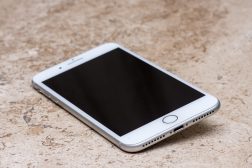Introduction
The rapid advancement of technology has transformed smartphones into powerful devices that not only serve as communication tools but also as versatile cameras. With just a few taps on the screen, we can capture precious moments and create lasting memories. But have you ever wondered what kind of data is stored in the photos taken using your smartphone?
Smartphone cameras capture more than just the visual image. Behind every photo, there is a wealth of information that provides valuable insights into the image itself and the circumstances surrounding its capture. Understanding the different types of data contained within these images can not only satisfy our curiosity but also enhance the overall photography experience.
In this article, we will delve into the various kinds of data that are associated with the photos taken using your smartphone. From image formats to camera settings, from metadata to location data, we will explore the fascinating details that provide a comprehensive overview of each photo’s story.
So, if you’re ready to uncover the hidden secrets within your smartphone photos, let’s dive into the world of data that lies beneath the surface of each captured image.
Image Format
When you take a photo using your smartphone, the image is saved in a specific file format. The most common image formats used by smartphones are JPEG (Joint Photographic Experts Group) and PNG (Portable Network Graphics). Each format has its own characteristics and advantages.
JPEG is a compressed file format that is widely used for storing photos due to its ability to reduce file size while maintaining acceptable image quality. When you capture a photo using your smartphone, the image is automatically processed and compressed as a JPEG file. This compression helps save storage space on your device, making it easier to store and share photos.
On the other hand, PNG is a lossless file format that is often preferred for images that require a transparent background or need to maintain high-quality details. Unlike JPEG, PNG retains all the original data of an image without any loss in quality. However, this comes at the cost of larger file sizes, which may affect storage capacity and file transfer speeds.
It’s essential to consider the intended use of the photo when choosing the image format. If you plan to share the photo online or need to conserve storage space, JPEG is the preferred option. However, if you require a transparent background or want to preserve the highest level of image quality, PNG is the way to go.
Understanding the different image formats can help you make informed decisions when it comes to storing, sharing, and editing your smartphone photos. By choosing the right format for each situation, you can strike a balance between image quality and file size, ensuring that your photos look their best while optimizing storage efficiency.
Metadata
When you take a photo using your smartphone, it’s not just the visual image that is captured. Along with the image itself, there is a trove of additional information known as metadata. Metadata provides valuable details about the photo, including the date and time it was taken, the camera make and model, and even the software used for editing.
This metadata plays a crucial role in organizing and managing your photo collection. It helps you search for specific photos based on certain criteria, such as date or location. Additionally, it allows you to sort and categorize your photos, making them easier to locate and navigate.
One essential piece of metadata is the time and date stamp, which provides a chronological reference for each photo. This information allows you to organize your photos in a timeline and relive the memories captured during specific periods. It also helps when looking for photos taken on a particular day or during a specific event.
Another significant aspect of metadata is the camera information. This includes details about the make and model of your smartphone, the lens used, and the exposure settings such as aperture, shutter speed, and ISO. Understanding this information can give you insights into the technical aspects of the photo and help you improve your photography skills.
In addition to camera information, metadata can also include GPS coordinates, providing location data for where the photo was taken. This is particularly useful when you want to remember the exact spot where a specific photo was captured or when organizing photos based on location.
Metadata is not only beneficial for personal use but also plays a crucial role in various professional applications. For example, photographers and artists use metadata to protect their copyrights by embedding copyright information directly into the photo’s metadata. This ensures that their work is properly attributed and prevents unauthorized use.
Overall, metadata adds depth and context to your smartphone photos. It not only helps you organize and manage your collections effectively but also provides valuable insights and information about each photo. Whether you’re a casual photographer or a professional, taking the time to explore and utilize the metadata can greatly enhance your photo management experience.
EXIF Data
EXIF (Exchangeable Image File Format) data is a specific type of metadata that provides a wealth of information about a photo. Unlike general metadata that includes details like the date, time, and camera information, EXIF data offers a more in-depth look into the technical aspects of the photo.
EXIF data includes a wide range of information, such as the camera settings used when capturing the photo. This includes parameters like the exposure time, aperture, focal length, and ISO sensitivity. Understanding these settings can give you insights into the technical choices made by the photographer and help you learn and improve your own photography skills.
In addition to camera settings, EXIF data also contains information about the image’s color space, white balance, and image resolution. Knowing the color space used in the photo can be crucial when it comes to accurately reproducing and editing the image. Similarly, understanding the white balance setting helps you determine the accurate color temperature of the scene when the photo was taken.
EXIF data can also include details about the camera’s flash usage, whether it was fired or not. This information is useful to assess how the lighting conditions were managed during the capture and can help photographers analyze the effectiveness of their lighting techniques.
Furthermore, EXIF data can even provide insights into the image’s post-processing history. It can record any edits or alterations made to the photo, such as cropping or adjustments to brightness and contrast. This information allows you to trace the image’s journey from the moment of capture to the final result.
EXIF data is not limited to technical information alone. It can also include details like the GPS coordinates of where the photo was taken, providing location information. This can be particularly useful when organizing and categorizing photos based on geographic location or for preserving memories of special places visited.
Overall, EXIF data is a treasure trove of technical and contextual information that offers a comprehensive view of a photo’s capture, settings, and processing. Understanding and utilizing EXIF data can not only provide valuable insights into the photo but also help you improve your own photography skills and enhance your overall photo management experience.
Location Data
One fascinating aspect of smartphone photography is the ability to capture not only the visual image but also the geographical location of where the photo was taken. This is made possible by the inclusion of GPS (Global Positioning System) technology in modern smartphones.
When you take a photo using your smartphone, the device automatically records the GPS coordinates of your location at that precise moment. This location data is then embedded within the photo as part of its metadata. It provides a geographical reference point, allowing you to recall the exact place where the photo was captured.
The ability to capture and preserve location data in your photos opens up a range of possibilities. It allows you to create visual memories of specific places and easily revisit them in the future. Whether you’re on a vacation, exploring a new city, or simply documenting everyday moments, the inclusion of location data adds another layer of context and storytelling to your photos.
Moreover, location data can be invaluable for organizing and categorizing your photo collection. By utilizing this information, you can create albums or tags based on specific locations, making it easier to search for and retrieve photos taken in a particular area. This can be particularly useful when creating travelogues or documenting important events in different locations.
However, it’s important to note that privacy considerations come into play when using location data in your photos. While it can enhance the overall experience, it’s crucial to be mindful of the potential implications. Before sharing your photos publicly or posting them on social media, it’s advisable to review the privacy settings and ensure that you’re comfortable with the level of location data being shared.
Location data adds a new dimension to smartphone photography, allowing you to preserve memories not just visually, but also geographically. By embracing and harnessing this data, you can create a more immersive and personalized photo collection that tells the story of your experiences and adventures around the world.
Camera Settings
When you take a photo using your smartphone, you have the ability to adjust various camera settings to capture the image exactly as you envision it. Understanding these camera settings can help you take full control of your photography and achieve the desired outcome.
One of the key camera settings is the exposure, which refers to the amount of light that reaches the camera sensor. This is primarily controlled by the aperture, shutter speed, and ISO sensitivity. Adjusting the aperture allows you to control the depth of field, determining whether the background is blurry or sharp. The shutter speed determines how long the camera’s sensor is exposed to light, affecting the amount of motion blur in a photo. The ISO sensitivity determines how sensitive the camera sensor is to light, influencing the overall brightness and image quality.
Another important camera setting is the white balance, which determines the color temperature of the photo. This setting ensures that the colors in the image appear natural and accurate. By adjusting the white balance, you can compensate for different lighting conditions, such as fluorescent or tungsten lighting, to achieve the desired color tones.
Additionally, most smartphone cameras offer various shooting modes, such as panorama, HDR (High Dynamic Range), and portrait mode. These modes provide pre-set settings optimized for specific shooting scenarios. For instance, panorama mode allows you to capture wide-angle, sweeping landscapes, while HDR combines multiple exposures to capture a greater dynamic range of light and shadow. Portrait mode creates a shallow depth of field effect, blurring the background and highlighting the subject.
Understanding and utilizing these camera settings can significantly enhance your smartphone photography. By taking control of the exposure, white balance, and shooting modes, you can unleash your creativity and capture images that truly reflect your vision.
Furthermore, familiarizing yourself with the various camera settings also opens up opportunities for experimentation and learning. By experimenting with different exposure settings, you can discover the effects of long exposure, motion blur, and high-contrast images. This hands-on approach allows you to develop your skills and broaden your understanding of photography.
Remember, the camera settings available on your smartphone are powerful tools that can elevate your photography to new heights. Take the time to explore and master these settings, and watch as your smartphone becomes a versatile and capable camera.
File Size and Compression
When you take a photo using your smartphone, the resulting image file occupies storage space on your device. The size of the file depends on multiple factors, including the resolution, image quality, and level of compression applied to the image.
The resolution of the photo refers to the number of pixels it contains. Higher resolution photos have more pixels, resulting in greater detail and clarity. However, larger resolution photos also occupy more storage space. It’s important to strike a balance between resolution and storage capacity, considering the intended use of the photo.
Image quality is another crucial factor that impacts file size. Higher quality images tend to capture more detail and have less compression applied. On the other hand, lower quality images may exhibit noticeable loss of detail due to heavy compression, resulting in smaller file sizes. It’s important to consider the level of image quality required for your specific needs, such as printing, online sharing, or personal archiving.
Compression is a process that reduces the file size of an image by removing unnecessary or redundant data. Most smartphones automatically apply compression to photos to optimize storage space. This compression can result in a smaller file size, making it easier to store and share photos. However, it’s important to note that excessive compression can lead to a loss of image quality, affecting details and colors.
Choosing the appropriate balance between file size and image quality is crucial. If you plan to print or display your photos at a large size, it’s advisable to choose higher resolution and lower compression to ensure optimal quality. Conversely, for online sharing or archiving purposes, where storage space is a concern, a smaller file size with moderate compression may be more suitable.
It’s worth noting that some smartphones also offer options to save photos in various file formats, such as RAW or uncompressed formats. These formats retain the maximum amount of data and provide flexibility for editing, but they come at the cost of larger file sizes.
Understanding file size and compression helps you make informed decisions about the storage, sharing, and quality of your smartphone photos. By considering factors such as resolution, image quality, and compression level, you can optimize your photo management and ensure that your photos are stored and shared in the most suitable format for your needs.
Image Quality
Image quality is a crucial aspect of smartphone photography. It refers to the level of detail, sharpness, and overall visual appeal of a photo captured using your smartphone.
One of the primary factors that determine image quality is the resolution of the photo. Higher resolution photos have more pixels, resulting in greater detail and sharpness. This is especially important if you plan to print or display your photos on larger screens where the details become more noticeable.
Another significant aspect of image quality is the lens and sensor quality of your smartphone camera. High-end smartphones usually feature advanced lenses and sensors that can capture images with impressive clarity and color accuracy. These components play a significant role in producing photos that are sharp, vibrant, and true to life.
Lighting conditions also influence image quality. Well-lit scenes tend to produce photos with better overall image quality compared to low-light situations. However, smartphone cameras have advanced algorithms and software that can optimize photos taken in challenging lighting conditions, resulting in improved image quality even in dim environments.
Post-processing also plays a role in enhancing image quality. Most smartphones offer built-in editing capabilities or access to various photo editing apps. These tools allow you to adjust brightness, contrast, saturation, and other parameters to further improve the overall look and feel of your photos.
Image compression, as mentioned in the previous section, can also impact image quality. Excessive compression can lead to loss of detail and introduce artifacts, resulting in lower image quality. Therefore, it’s essential to strike a balance between file size and image quality when choosing the level of compression.
In addition to technical factors, composition and creativity also contribute to image quality. Framing, composition techniques, and attention to subject matter can elevate the overall aesthetic value of a photo and enhance its quality.
Ultimately, image quality is a subjective aspect of photography but is generally judged by the clarity, detail, and overall visual appeal of a photo. By understanding the various factors that impact image quality and exploring the capabilities of your smartphone camera, you can capture captivating photos that showcase your vision and creativity.
Timestamp
The timestamp of a photo refers to the date and time when the photo was taken. This information is automatically recorded by your smartphone camera and is embedded as part of the photo’s metadata.
The timestamp serves as a chronological reference, allowing you to organize your photos in a timeline. This makes it easier to search for and locate photos taken on specific dates or during particular events or occasions. Whether you’re looking to reminisce about a specific day or find a photo taken on a special occasion, the timestamp provides a convenient way to navigate through your photo collection.
In addition to organizing your photos, the timestamp is also a valuable piece of information for documenting and preserving memories. By knowing the precise date and time when a photo was taken, you can accurately recall the sequence of events and the context surrounding that moment. This can be particularly important when looking back at photos years later, as the timestamp adds historical significance to your captured memories.
Furthermore, the timestamp is useful for comparing and syncing photos from different devices or cameras. If you have multiple smartphones or cameras, timestamps help you align and organize the photos taken across different devices based on their chronology. This allows you to create a seamless narrative or story when compiling your photos into albums or presentations.
When sharing your photos with others, the timestamp can also help in clarifying the sequence of events and providing context. It adds credibility and authenticity to your photos by verifying the time they were taken, especially in situations where accuracy and accountability are essential.
However, it’s important to note that timestamps can be modified or lost during photo editing or transferring processes. Some editing software allows you to change the timestamp or remove it entirely. Additionally, when transferring photos from one device to another, there is a possibility of losing the original timestamp if it’s not preserved during the transfer.
Overall, the timestamp provides valuable information about the date and time when a photo was taken, aiding in organization, documentation, and preserving memories. It is a helpful tool for navigating through your photo collection and adding context to your captured moments.
User Data
When you take a photo using your smartphone, there is a layer of data that is often overlooked but can provide personal and contextual information about the photo. This is referred to as user data and can comprise a variety of details depending on the settings and applications used on your device.
User data can include information such as the name of the photographer, additional notes or captions, keywords or tags, and even information about the purpose or context of the photo. This data allows you to add your personal touch and provide further insights into the photo for your own reference or when sharing with others.
Adding a name or nickname as the photographer allows you to establish ownership and provide credit for your work. This comes in handy when sharing your photos and allows others to easily identify the creator of the image. Additionally, including personal notes or captions can provide details about the photo or the story behind it, adding depth and meaning to the image.
Keywords or tags help in organizing and searching for specific photos within your collection. By assigning relevant keywords to your photos, you can quickly locate them based on specific criteria, such as location, subject matter, or theme. This ensures efficient photo management and makes it easier to find and use your photos for various purposes.
The user data attached to a photo can also include privacy settings that define how the photo can be accessed, viewed, and shared. This allows you to control the visibility and accessibility of your photos, ensuring they are shared only with the desired audience or kept private to maintain confidentiality.
Furthermore, some photo editing applications or social media platforms allow you to add filters, effects, or stickers to your photos. These additions can also be considered as user data, as they reflect your personal preferences and creative choices when enhancing or modifying the original image.
It’s important, however, to be mindful of the information you include as user data, particularly when sharing photos online. Consider the potential privacy implications and ensure that the data shared does not compromise your personal information or put your privacy at risk.
User data adds a personal touch to your photos and allows you to infuse your creativity and personality into your captured moments. By leveraging user data, you can not only enhance the organization and searchability of your photo collection but also contribute to the overall story and context of your images.
Conclusion
Taking photos using your smartphone goes beyond capturing stunning visuals. Each photo carries a wealth of data that adds depth, context, and personalization to your images. From metadata and EXIF data to location data and user data, the information stored within your smartphone photos contributes to the overall photography experience and provides valuable insights into the moments you capture.
Understanding the various types of data associated with your smartphone photos allows you to better organize, manage, and share your images. By leveraging metadata, you can easily search for specific photos based on criteria such as date, location, or camera settings. EXIF data provides technical information about the capture, allowing you to analyze and improve your photography skills. Location data adds geographical context and helps you relive memories of specific places.
User data infuses your personal touch and creativity into your photos. Adding notes, captions, and tags allows you to provide additional insights and organize your photos according to your preferences. Furthermore, privacy settings give you control over the visibility and accessibility of your photos when sharing them with others.
Moreover, understanding image formats, file size, compression, and image quality enables you to make informed decisions regarding storage, sharing, and printing of your smartphone photos. By striking the right balance, you can optimize image quality, reduce file size, and conserve storage space without compromising on the visual appeal of your images.
In the end, diving into the world of data contained within your smartphone photos enhances your photography experience and unlocks new ways of organizing, personalizing, and reliving your cherished memories. By harnessing the power of this data, you can create a captivating visual narrative that tells the story behind each photo and adds a personal touch to your smartphone photography journey.
















![13 Best Free People Search Engines and Websites [Tips Included]](https://robots.net/wp-content/uploads/2020/05/free-people-search-300x200.png)








